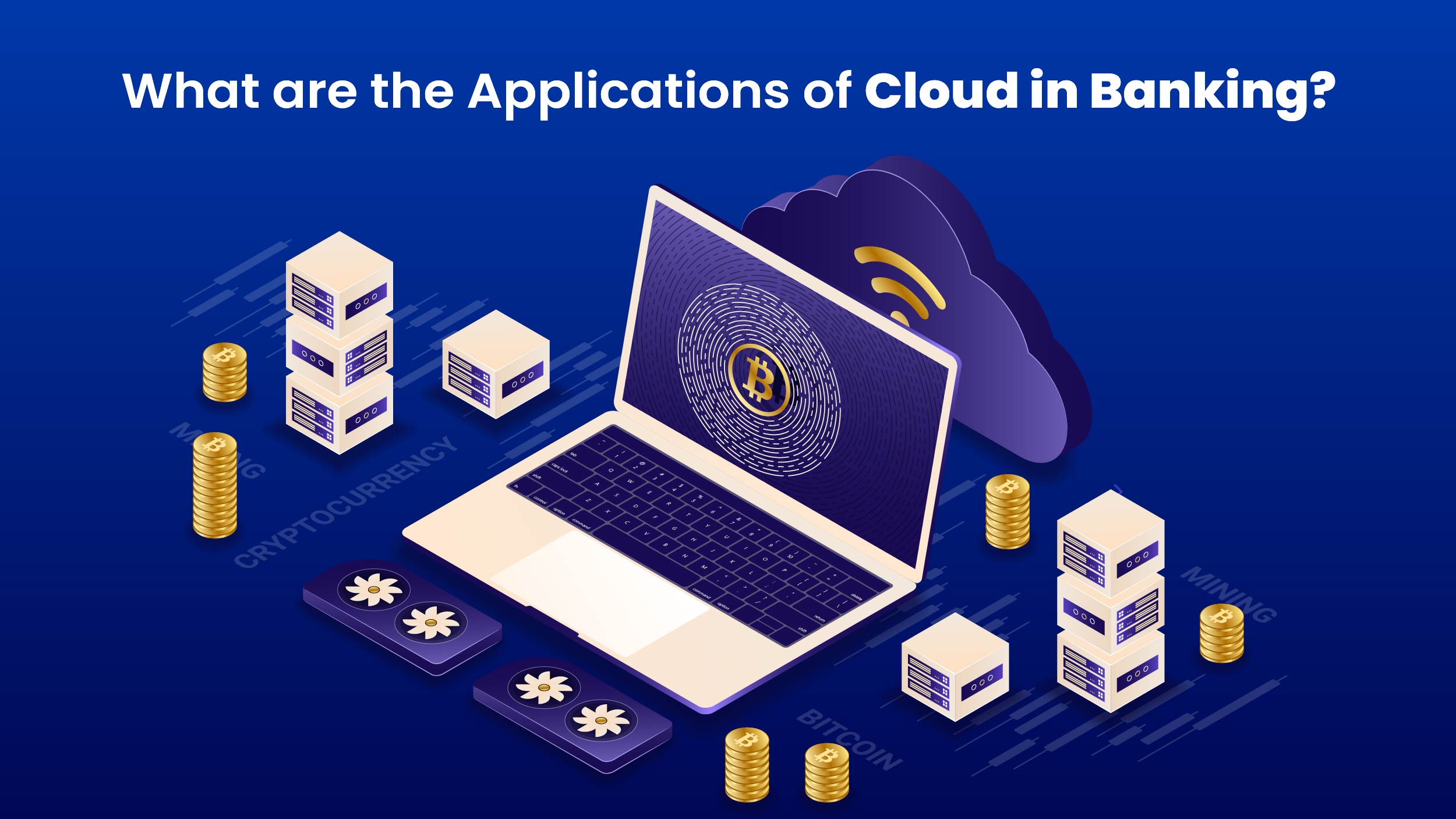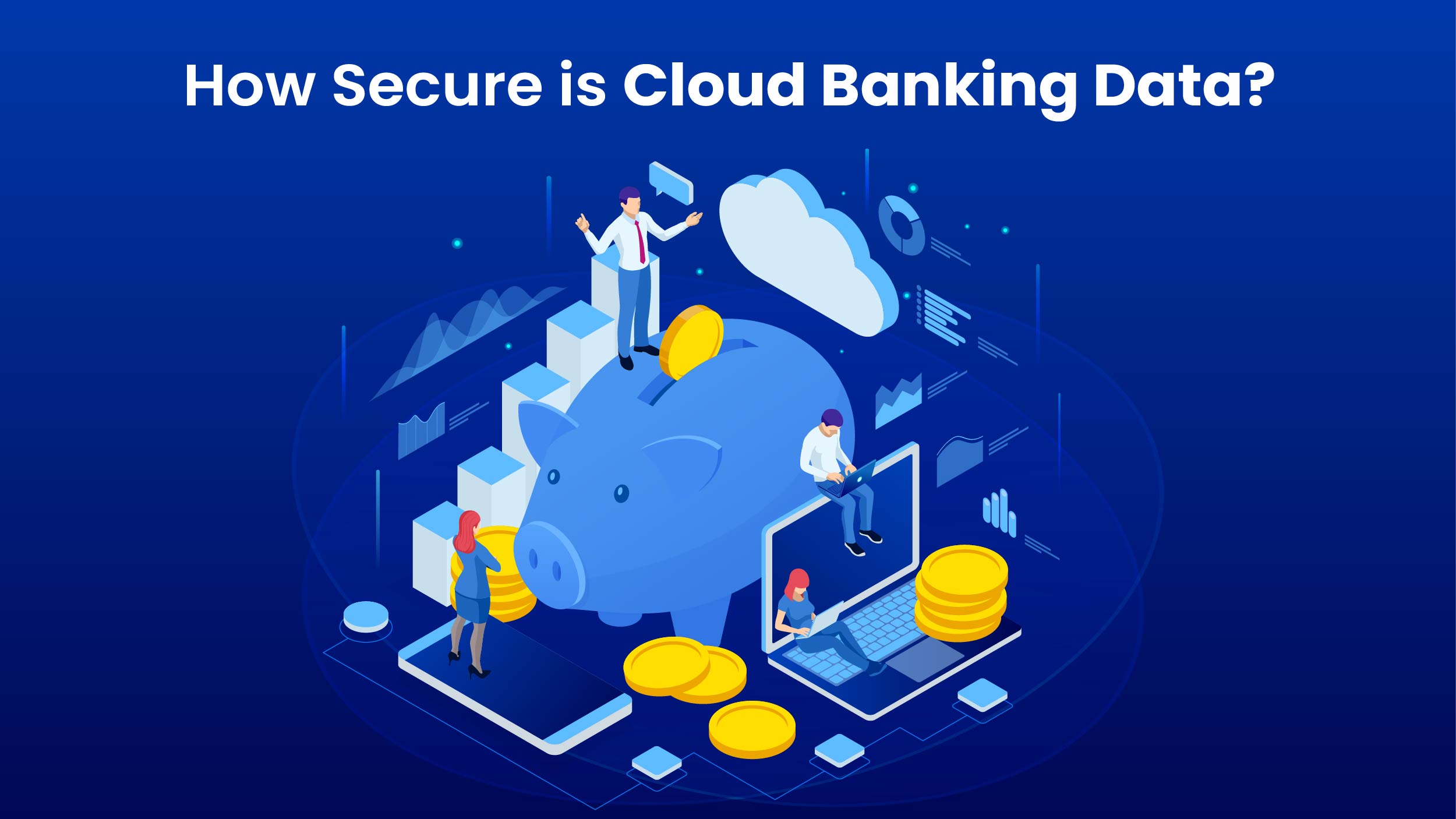In today’s fast-paced world, traditional banking methods often fall short when it comes to meeting the needs and expectations of customers. Long waiting times, complex processes, and limited accessibility have become all too common, causing frustration and inconvenience. This is where cloud banking comes into play. With this banking, customers can bid farewell to long queues and paperwork, and embrace a future where financial transactions are swift, accessible, and hassle-free.
What is Cloud Banking?
Cloud banking is the deployment and management of banking infrastructure in the cloud, enabling financial institutions to offer basic banking services and financial activities without needing dedicated physical servers. It uses cloud computing technology to store data, access advanced software programs, and provide financial services online.
What are the Applications of Cloud in Banking?

- Data Storage and Processing:
- Cloud banking revolutionizes data management by shifting from local systems to remote servers.
- Centralized storage facilitates seamless access and real-time analysis for insights and reporting.
- With cloud-based solutions, banks efficiently handle the escalating data volumes of the digital era.
2. Customer Relationship Management (CRM) and Enterprise Resource Planning (ERP):
- Cloud computing grants access to CRM and ERP applications, enhancing client relations and internal operations.
- Personalized interactions and streamlined data management improve customer experiences.
- Banks optimize processes with these applications, enhancing both customer satisfaction and operational efficiency.
3. Infrastructure and Application Development:
- Cloud services accelerate the development and deployment of tailored solutions, optimizing banking operations.
- Scalability enables banks to adjust computing resources dynamically without the overhead of on-premises equipment
4. Security and Disaster Recovery:
- It fortifies security with encryption and compliance measures, ensuring data integrity and privacy.
- Disaster recovery mechanisms guarantee data redundancy and resilience in adverse scenarios.
5. Collaboration and Innovation:
- Cloud computing fosters collaboration among banks and platform providers, fostering innovation and process enhancement.
- It empowers financial institutions to swiftly adopt emerging technologies, delivering market-responsive products and services.
Also read: What’s Next in Banking Software: Trends and Top Solutions for 2024
How Secure is Cloud Banking Data?

Here are some key considerations regarding the security of cloud banking data:
- Encryption and Security Measures: Cloud solutions employ industry-standard encryption techniques to safeguard data both in storage and during transmission. Owners can generate encryption keys to restrict access solely to authorized individuals. Additionally, cloud service providers implement robust security protocols to prevent unauthorized access and data breaches.
- Compliance with Regulations: Financial institutions are obligated to adhere to industry-specific regulations and standards governing data security and privacy. Cloud banking providers, well-versed in these regulations, often offer guidance to banks in meeting security and compliance mandates.
- Shared Security Responsibility: Cloud operates on a shared security responsibility model, wherein both the service provider and the client share obligations for ensuring data security. Providers secure the underlying infrastructure, while clients are tasked with safeguarding their applications and data within the cloud environment.
- Audits and Certifications: Cloud providers undergo audits and attain certifications to validate compliance with security standards and regulations. These assessments and reports serve to reassure regulators and auditors of the cloud setup’s adherence to compliance requirements.
- Continuous Monitoring and Incident Response: Cloud systems implement continuous monitoring and robust incident response mechanisms to promptly identify and address security threats. This proactive approach aids in the timely detection and mitigation of potential risks and vulnerabilities.
- Hybrid Cloud Approach: Banks can opt for a hybrid cloud strategy where sensitive data resides in private clouds while leveraging the computing power of public clouds. This approach addresses security and privacy concerns while capitalizing on the scalability and flexibility offered by cloud computing.
Are Traditional Banks Transitioning to Cloud Banking?
Traditional banks are unequivocally shifting towards banking in cloud, acknowledging its myriad benefits and opportunities. The impetus to embrace the cloud stems from evolving business models and competitive pressures, compelling traditional banks to integrate cloud technology swiftly. Experts assert that traditional banking institutions are no longer deliberating whether to transition to the cloud, but rather how expeditiously they can execute it.
Cloud banking offers a plethora of advantages for financial institutions. It enables banks to prioritize delivering superior customer service, enhancing data security, and ensuring regulatory compliance, rather than being bogged down by the maintenance of their hardware infrastructure. Cloud technology delivers enhanced agility, scalability, cost efficiency, and enriched customer experiences. Moreover, it equips banks to harness advanced data analytics, machine learning, and other capabilities, thereby accelerating development timelines compared to in-house capabilities.
While some traditional banks may encounter challenges in migrating to the cloud, such as the costs and efforts associated with workload migration and the imperative for strategic change management, numerous banks are actively pursuing cloud adoption. They are charting individualized pathways for their transitions, with some banks emphasizing cloud-native design principles, while others are forging partnerships with cloud service providers to facilitate seamless transitions.
Is Cloud Banking the Future of Finance Sector?
Cloud banking emerges as the future paradigm in banking, evident from the strategic shift of C-suite executives, IT leaders, and board members towards cloud computing within the financial services sector. Beyond being a mere technology, cloud computing signifies a pivotal destination for banks and financial institutions to store data, access sophisticated software applications, and revolutionize their business operations. Embracing cloud technology is viewed as a catalyst for enterprise-wide transformation and a potential game-changer for the trajectory of financial service organizations.
The integration of cloud technology in banking necessitates coordination among diverse stakeholders, including CIOs, CTOs, HR personnel, and various departments, to ensure a seamless migration and to leverage the full benefits of cloud solutions. Compliance holds paramount importance across industries, particularly within the banking realm. Financial regulators are already delineating emerging risks and issuing guidelines to mitigate them, recognizing the inevitable widespread adoption of cloud technology within banks.
A survey conducted by the Economist revealed that 72% of IT executives within the banking sector deem cloud adoption as a pivotal strategy for achieving their organizational objectives. Cloud technology is now perceived as the go-to solution for driving digital transformation in banking, offering advantages like heightened agility, scalability, cost efficiency, and enriched customer experiences.
However, challenges and considerations loom over cloud-based banking, encompassing aspects such as ensuring data security, managing billing costs, and navigating the migration process prudently. Financial institutions must meticulously evaluate the hurdles and advantages of cloud-based digital banking before embarking on implementation.
End Note
Cloud banking is poised to play a pivotal role in the future of the banking industry. The advantages of improved agility, scalability, cost efficiency, and enhanced customer experiences are driving this shift. While challenges exist, such as migration complexities and change management, the urgency to adopt cloud technology is clear. The COVID-19 pandemic has further accelerated this transition, emphasizing the need for digital banking capabilities and data security. Banking in the cloud is reshaping the industry, enabling banks to focus on core competencies while leveraging advanced technologies.




